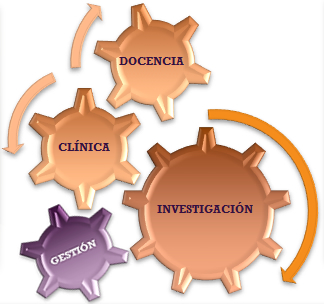The Health Research Institute (Instituto de Investigación Sanitaria) of the Hospital Clínico San Carlos (IdISSC) is a functional structure of multidisciplinary and translational biomedical research of excellence, oriented to basic, clinical, epidemiological, and health services research, which will have its headquarters in the complex that houses the Hospital Clínico San Carlos.
It is the result of the relationship between the Madrid Health Service (SERMAS) through the Hospital Clínico San Carlos (HCSC) and Primary Health Care Centres in the area of influence, the Complutense University of Madrid (Universidad Complutense de Madrid) (UCM), the Polytechnic University of Madrid (Universidad Politécnica de Madrid) (UPM), the Biomedical Research Foundation (Fundación para la Investigación Biomédica) of the HCSC (FIBHCSC), and the Department of Health (Directorate General for Research, Training and Health Infrastructures) of the Community of Madrid.

Of course, the IdISSC provides for the incorporation and resignation of research groups within its scientific structure. The incorporation of new research groups has different procedures, depending on their origin, as indicated below:
Incorporation of an external research group to the entities that make up the Institute:
If a research group belonging to an entity that is not currently part of the IdISSC is interested in joining the scientific structure of the Institute, it should contact its highest government body to initiate the procedures for the incorporation of the entity as a full member of the Institute.
Once the entity is part of the Institute, the group will follow the procedure for inclusion in the scientific structure set out in the IdISSC Integration Plan.
Incorporation of a research group belonging to one of the entities that currently make up the Institute:
The phases for incorporating a new research group belonging to one of the entities that make up the Institute are as follows:
Finally, the Governing Council will issue a final assessment, which may be one of the following 3 options:
He/she must collaborate in a research group that pursues the institutional aims referred to above.
The groups must be made up of the people who usually work together on one or more lines of research, whether they all belong to the Hospital, the University or both. The IdISSC has “pure UCM”, “pure Hospital” and mixed groups.
Researchers and research support staff may only be part of one group but may collaborate on projects and publications with other groups.
In accordance with the agreement for the creation of the IdISSC, people from one of the signatory entities (Complutense University of Madrid, Hospital Clínico San Carlos, Polytechnic University of Madrid, Biomedical Research Foundation of the Hospital Clínico San Carlos, and Madrid Health Service (including the Primary Health Care Centres in the area of influence and other centres dependent on the Madrid Health Service) may form part of the Institute.
However, those entities of a similar nature that wish to establish forms of coordinated action with the Institute and whose relationship with the Institute has been reflected in a document, as defined in Royal Decree 339/2004, of 27 February, may form part of the IdISSC as members of the same, as defined in Royal Decree 339/2004, of 27 February, may also form part of the IdISSC. Once another entity is incorporated into the Institute, the integration of its researchers, research groups, and teams are assumed.
A researcher who belongs to a hospital that is already a health research institute could not be part of the IdISSC.